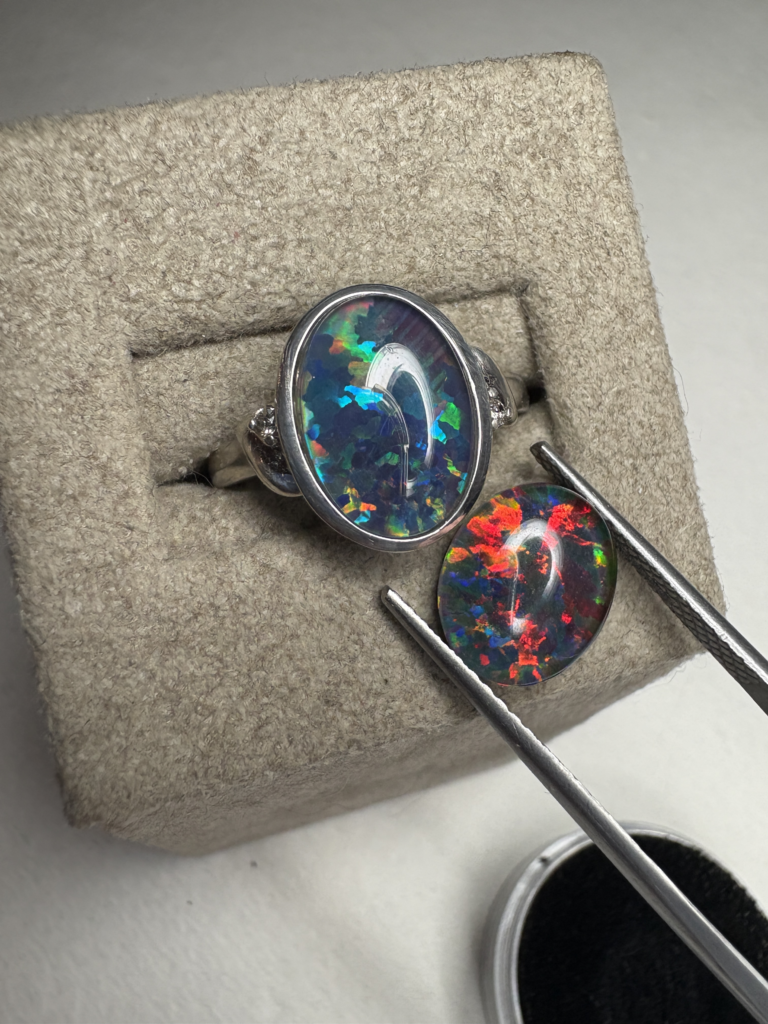
When presented with fine quality Coober Pedy opal triplets, at first glance, it may be hard to tell if they are made from natural, or lab grown. In fact, it can be hard for a Graduate Gemologist to tell as well; unless they have worked with the loose material.
First off, what is a triplet? A triplet is a gem that is constructed of 3 parts. A doublet, for example, would be just 2 parts; the stone, adhered to a base or often a quartz or glass top. A triplet contains both; sandwiching the thin gem material between.
As gemologists, we stake our reputation on accuracy. We’re taught to trust the testing process and if it can’t be confirmed, then better safe than sorry. This being said, if a gemologist isn’t confident, or can’t confirm by at least a couple lab tests that a gem is authentically as stated, it won’t—or shouldn’t, anyway, be labeled as something assumed.
There are some tell tale signs of working with synthetic opals. For one, lab created stones tend to be more consistent in play of color and pattern. We can also see the structure of the opal, from its side, can look like rods of color—as opposed to disrupted patterns. But this isn’t always the case…
Fine Coober Pedy opal triplets can be top quality thin slices that are selected for their uniformity and consistency in play of color, and pattern.
A gemologist will look under magnification for honeycomb or snakeskin like patterns in lab material. This shouldn’t be confused with patches and fairly consistent color. I tend to observe the layers of the color and determine if they are organic in appearance or not.
